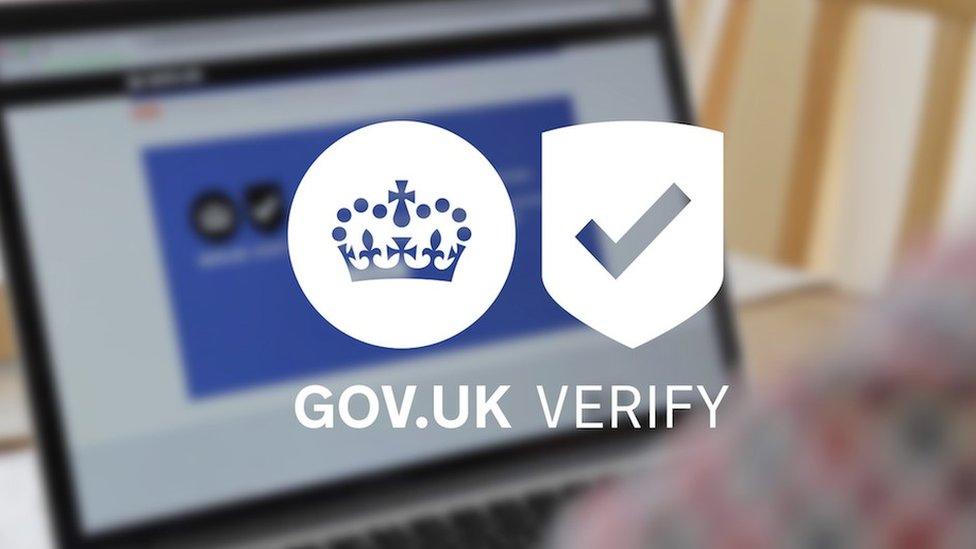Whitehall’s identity crisis: HMRC and Verify
- Published

Verify is the flagship of the Government Digital Service (GDS). It's an online identity system designed to let citizens securely access all sorts of public services with ease. But now it has competition from another branch of government, HMRC.
This week, HMRC revealed that it was working on its own "identity solution" for individuals and businesses, while mentioning in an offhand way that "other departments will use gov.uk Verify for all individual citizen services".
But only last week, when the government's digital masterplan was published, the cabinet office minister Ben Gummer announced, external that Verify, external was central to the transformation of public services. Its rollout was going to be accelerated, with a target of 25 million users by the end of 2020.
Now the GDS and HMRC are involved in a bitter turf war, and there is a danger that we will end up with public confusion over which identity service to use, and a much higher bill for the public purse than necessary.
So why is HMRC going its own way? First of all a bit of history. The need for a new online identity system across government has been urgent for some time. For roughly 15 years, everyone needed to use something called Government Gateway to verify their identity, and this was a slow and cumbersome process.
One former senior government official tells me it was also "utterly insecure" with identities available to buy on the web for a few pounds. The plan is to phase out the Gateway by 2018.
Hence the need for Verify, an identity platform where users can choose between a number of private sector providers, from Barclays to the Post Office, to prove their identity.
But there is one good reason for HMRC to develop its own service. Verify is designed to identify individuals, not businesses or accountants and the Revenue needs to do that too.
So you can just about understand why the organisation might work on a bespoke service for those customers - but why compete with Verify to sign up individuals? In fact, HMRC seems to have realised it has overstepped the mark.
On Tuesday, as I and other journalists called to ask why this duplication of effort was going on, the HMRC blog, external announcing the identity service was amended. A sentence referring to individuals was removed and replaced by one saying: "This would be restricted to business and agent-facing services only as Cabinet Office requires all other departments to use gov.uk Verify."
It sounds as though the Cabinet Office may have called and said play nicely.
But I've spoken to two former senior executives from the GDS who say HMRC has repeatedly tried to obstruct Verify. One alleged that the Revenue had continually pointed users of its website towards the old Government Gateway system rather than the new service.
The other put the blame on the determination of HMRC senior managers to stay in control, saying bitterly: "Its leaders don't care one jot if millions of people get a [terrible] service as long as it wins the Whitehall game."
Both fear that the economics of Verify could now be threatened as HMRC was supposed to be a big and valuable customer. Without its support, it may struggle to hit that target of getting 25 million people signed up by 2020.
HMRC gave me this statement: "HMRC is committed to Verify as the single identification service for individuals and is fully focused on delivering this.
"The authentication service that HMRC is developing to replace the Government Gateway will complement the existing Verify service for business representatives."
Behind all this lies a long history of tension between the newcomers at GDS and the Whitehall old guard who resent being told what to do by what they perceive as naive and arrogant outsiders.
Critics of GDS and Verify say the platform has had too many teething problems and has failed so far to market itself effectively to the public.
With a whole series of departures of senior executives and a perception that it has dwindling support at ministerial level, GDS may not be well-placed to win the battle over identity with the mighty HMRC.
But if both continue to pour significant sums into services which duplicate each other then it is the taxpayer who will be the loser.
- Published15 December 2016
